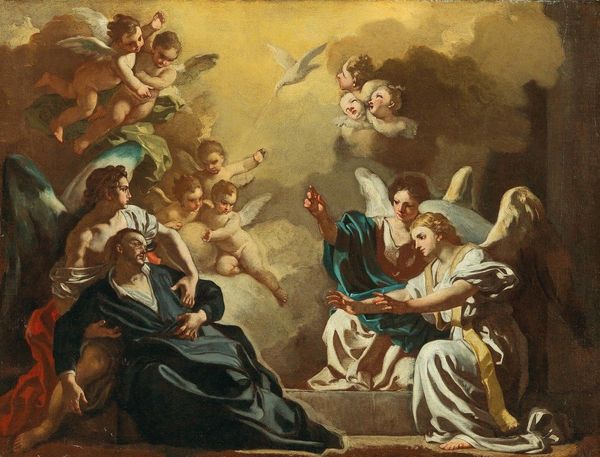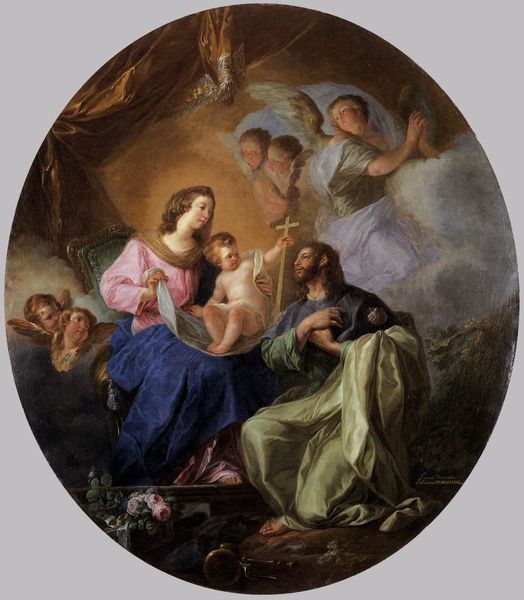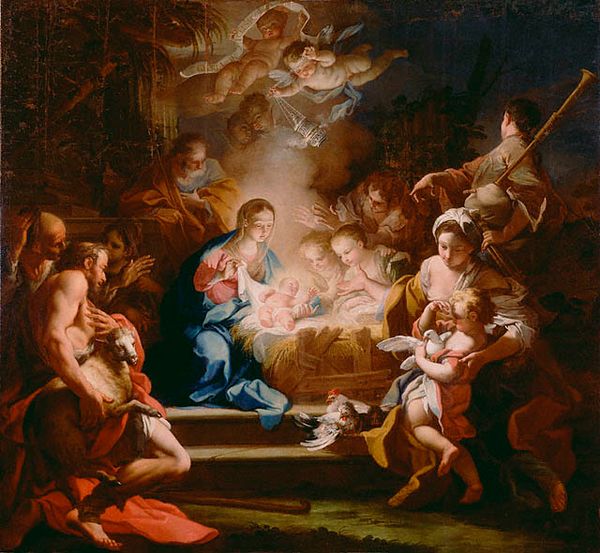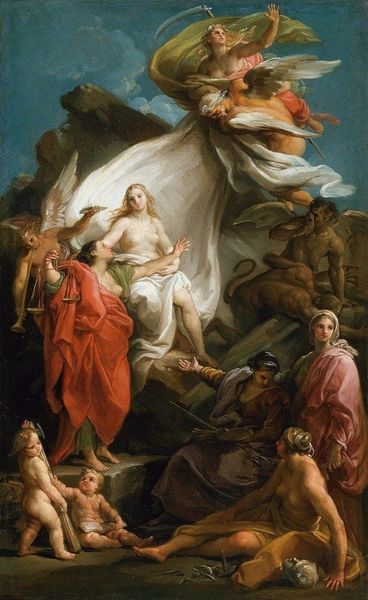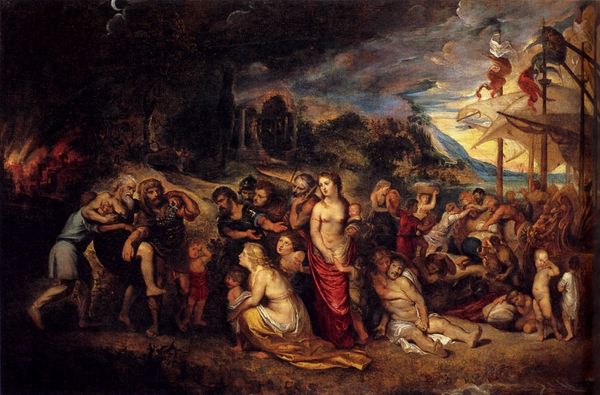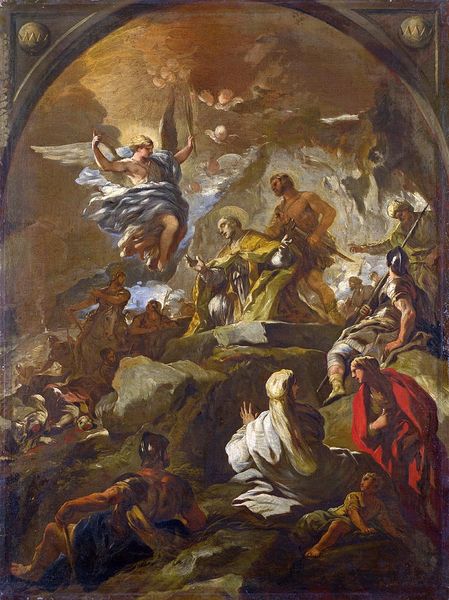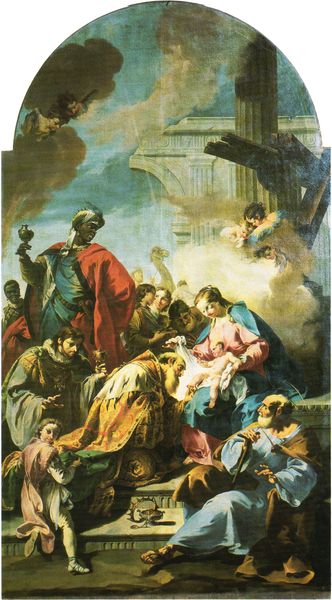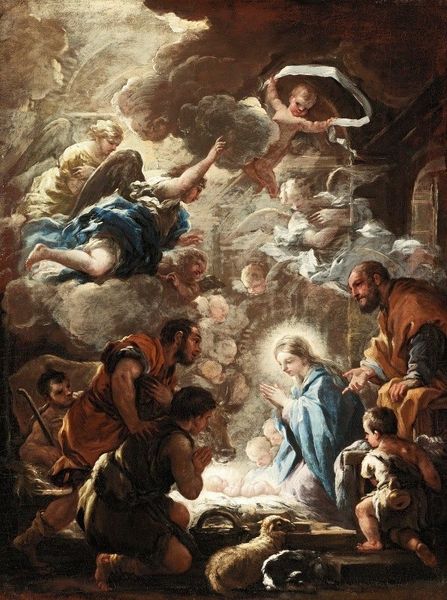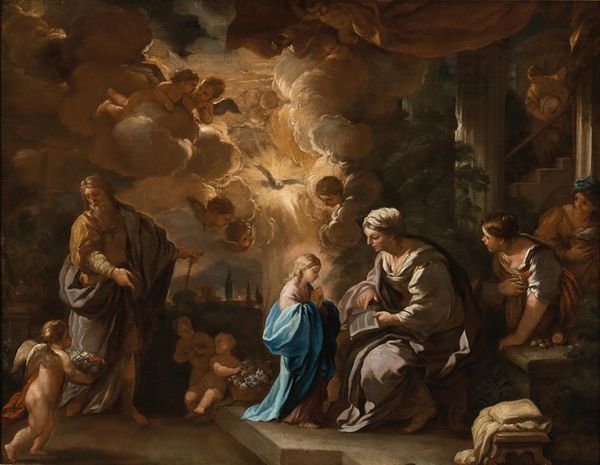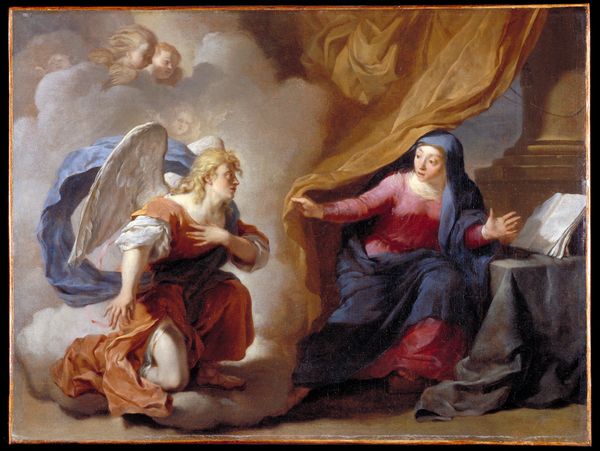
Dimensions: 79 x 55 cm
Copyright: Public domain
Curator: The textures here are amazing! I want to know more about how Goya applied these oil paints. Editor: Well, what strikes me first about Francisco de Goya's "Triple Generation," painted in 1769, is its audacious use of space to illustrate complex social hierarchy. We have what appears to be The Holy Family represented under a cloud of onlookers including a clear depiction of the Abrahamic God, the Father, in a literal heaven. Curator: That's true, and it shows, but look closer: The way he layers the oil is so important. Notice the impasto creating that luminosity to enhance and highlight the figures in this spiritual scene! It really amplifies the holy theme that you so succinctly called out! And how was Goya using and sourcing this material, with its increasing availability thanks to industrialization? Editor: Indeed! The piece is awash with light; almost operatic. It reflects the politics of imagery in its era, aiming to inspire faith and confirm the church's central authority in this region. Look at Saint Joseph on the far right of The Holy Family, positioned to guide onlookers’ pious reflections through visual cues in posture and gesture. Curator: But don’t forget Goya’s physical process. The physicality involved with the tools to spread this oil around – the labour – gave us a certain version of Saint Joseph, divinely guided by his surroundings indeed, but also limited and empowered by the resources that physically got him here! This is not merely some transcendent ethereal fantasy to simply awe churchgoers. It is very intentionally painted! Editor: Point taken! Goya positions this painting to participate in visual strategies tied to Spanish empire expansion by shaping ideals about religious leadership through these oil pigments themselves, which are traded and imbued with societal value at the time. The materials are intrinsically linked to power and global exchange. Curator: Right. Looking at the facture tells us volumes about 18th century religious power! A study of just oil, its availability, and Goya’s method transforms "Triple Generation" from a statement of faith to a reflection of labor's materiality within this period. Editor: By examining the painting's purpose within the public sphere we understand that what truly makes this devotional art is an artist making intentional choices, both spiritually and politically – not despite, but precisely because of his historical location and use of globally sourced pigment.
Comments
No comments
Be the first to comment and join the conversation on the ultimate creative platform.
